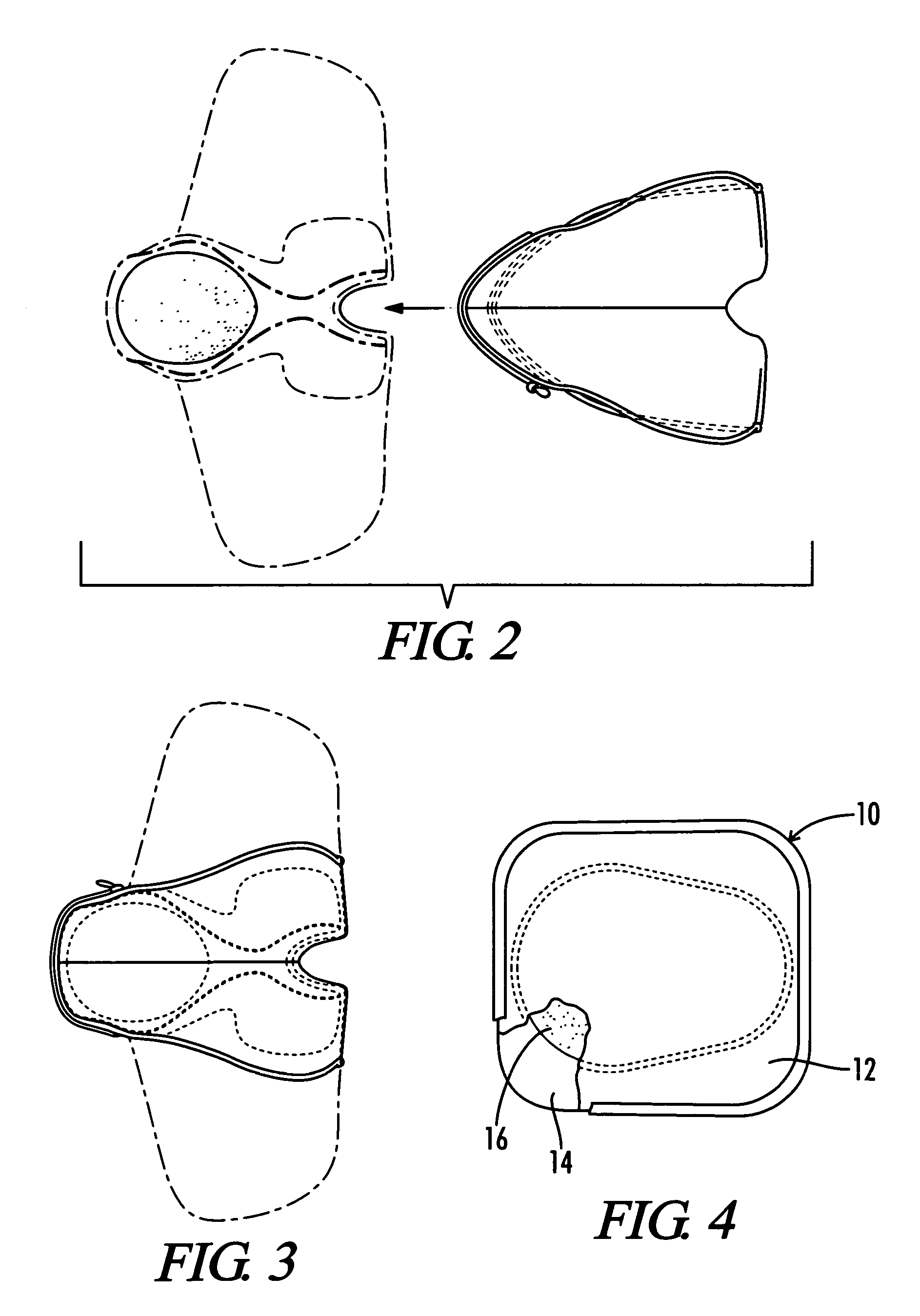Non-slip horse saddle pad
a saddle pad and non-slip technology, applied in saddles, traction harnesses, fastening devices, etc., can solve the problems of lack of sufficient air flow, material lack of sufficient airflow, and inability to allow sufficient airflow, etc., to achieve low cost, high friction, and light weight
- Summary
- Abstract
- Description
- Claims
- Application Information
AI Technical Summary
Benefits of technology
Problems solved by technology
Method used
Image
Examples
Embodiment Construction
[0034]In accordance with an exemplary embodiment of the present invention as shown in FIGS. 1–9, a saddle pad apparatus, device, or assembly is generally designated by the reference numeral 10.
[0035]With reference to FIGS. 1–9, there is shown the basic embodiment of the saddle pad 10 of the present invention consisting of a top layer 12, a bottom layer 14 and a stiffener layer 16. This construction allows for a flexible, form fitting, ventilated, non-slip saddle pad made from a top 12 and bottom 14 outer layer of non-slip material.
[0036]The top 12 and bottom 14 layers combine to cover an inner stiffener layer 16 constructed from ventilated stiffener material. This non-slip and ventilated horse saddle pad 10 is made of a cohesive and adhesive poly vinyl chloride foam material that will adhere to a horse's back and simultaneously adhere to the bottom or horse side of saddlery. The material used in the pad 10 can be multiply layered with sufficient plies to provide the desired protecti...
PUM
 Login to View More
Login to View More Abstract
Description
Claims
Application Information
 Login to View More
Login to View More - R&D
- Intellectual Property
- Life Sciences
- Materials
- Tech Scout
- Unparalleled Data Quality
- Higher Quality Content
- 60% Fewer Hallucinations
Browse by: Latest US Patents, China's latest patents, Technical Efficacy Thesaurus, Application Domain, Technology Topic, Popular Technical Reports.
© 2025 PatSnap. All rights reserved.Legal|Privacy policy|Modern Slavery Act Transparency Statement|Sitemap|About US| Contact US: help@patsnap.com



